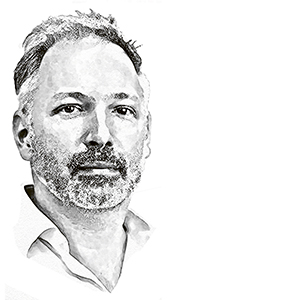The National Quantum Strategy contains a truly audacious claim: that Australia will build the world’s first error-corrected quantum computer.
Is this possible? Australia doesn’t even manufacture conventional computers. Can we really build a quantum computer here?
Quantum computers are the technology of tomorrow. By exploiting the strange nature of matter at the smallest scales, quantum machines offer pathways to develop new materials, design new chemistry and pharmaceuticals, and completely upend cryptography. The limits of its promise are unknown.

What is known is that building an error-corrected quantum computer that’s large enough to tackle these wicked problems is a scientific and engineering challenge up there with a mission to Mars.
Australia has long been a research leader in quantum computing, and quantum technologies more generally. Many of the critical scientific breakthroughs that point the way to building a practical quantum computer chip have been made right here, published in top academic journals, and lauded worldwide.
We have truly world-leading programs in building quantum computing technologies in silicon, and out of optical components. (Both of these approaches benefit from potential compatibility with the nanofabrication techniques used for conventional computing and information technologies – I’ll come back to that below.)
These hardware strengths are supported by a lively community of researchers exploring alternative approaches, and innovators in the architecture design of large-scale quantum computers.
It is a considerable quantum leap, however, to take this research leadership and translate it into a domestic manufacturing capability. The rest of the world is charging ahead, with major tech multinationals and assertive nation states already building nascent quantum capabilities based on our research ideas and those of others.
There is a significant risk that, despite our longstanding research leadership in quantum, Australians will soon be buying quantum compute as a cloud service from overseas suppliers rather than manufacturing the technology ourselves and selling it to the world. Another economic opportunity lost.
So, what is required for us to have a globally competitive quantum computing manufacturing industry here in Australia?
There are several required ingredients
First, a high-tech manufacturing facility operating at the limits of what is possible will need a whole ecosystem of supporting industries. Quantum technologies require state-of-the-art radio frequency and microwave electronics, advanced materials, semiconductor nanofabrication, optics and photonics, cryogenics, sensing and metrology, and a host of other capabilities.
Fortunately, Australia is host to a broad range of innovative companies that can deliver bespoke and agile solutions ranging from wi-fi chips to optical switches.
For the quantum technologies where Australia has research leadership – spins in silicon, and silicon photonics – a strong domestic semiconductor sector will be crucial. Early ideas can be tested on a small scale in a university lab, but building and testing prototypes as well as demonstrating a feasible pathway to large-scale manufacturing will need research-focused semiconductor foundries.
Lincoln Lab, based at MIT in the US, and the Interuniversity Microelectronics Centre (IMEC) in Europe, are great examples of what’s possible; these facilities can enable researchers and startups to test the scale-up of their innovations and create early prototypes for market testing.
The Advanced Manufacturing Research Facility in Western Sydney, and new ideas and projects supported by the National Reconstruction Fund, provide a path to such capabilities domestically.
Second, regardless of the range of domestic capabilities, we must be deeply connected with global partners and supply chains.
Recently, significant legislative changes have been passed, in Australia and our US and UK allies, to facilitate sharing of quantum technologies, recognised as a dual-use technology in the AUKUS agreement. These agreements open up key international markets for Australian quantum companies and unlock those key supply chains.
By being closely embedded in a global innovation network with key allies, our quantum companies can also be assured of unhindered access to the very best “tier one” nanofabrication foundries globally that will allow for manufacture of quantum chips at scale.
Such foundries can cost many billions of dollars just to build, but it may not be necessary to have such a domestic capability provided that our integration with such facilities globally can be assured, even in times of disruption.
Third, government will need to nurture the early growth of the quantum industry. The Australian and Queensland governments’ recent investment of nearly one billion dollars in PsiQuantum to manufacture quantum computers in Brisbane is a significant step in this direction.
More is needed, but this one investment has already sent a very loud and clear signal to the rest of the world: Australia is committed to a domestic manufacturing capability in this critical technology.
On top of that, the Australian Government has awarded $18.4 million to the University of Sydney to establish Quantum Australia, in a consortium including all the major research universities, quantum companies and strategic partners, supporting the growth of a domestic quantum industry.
Quantum Australia brings together this entire national quantum ecosystem to grow Australia’s quantum industry, embedding quantum technology in our hospitals, our banks, and our farms.
It will raise awareness of quantum technology, foster collaboration between industry and universities, encourage the creation and growth of quantum startups, and connect quantum companies on a national and international scale.
These three ingredients are all here. A challenge for Australia is that these same ingredients can be found in several other leading nations around the world. The US and UK have enviable industrial bases including advanced semiconductor fabrication capabilities, they are anchors of global alliances with a reputation for technological innovation, and their governments have been investing billions over the past decade in quantum capabilities.
McKinsey estimates that China is investing more than $20 billion in quantum over the next five years. Can manufacturing quantum computers here in Australia really compete?
Yes, because of a fourth critical ingredient, and it is one where Australia truly stands out from the pack. A quantum workforce. Like sending humans to Mars, we know that building a quantum computer is possible, but the scientific and engineering challenges that must be overcome to get there are daunting. Only a nation with a highly skilled quantum workforce will be able to sprint to the finish line.
And Australia truly shines here. The decades of fundamental research into quantum technologies in Australia has not only established our research leadership, but it has also trained over 2,500 domestic and international early career researchers in quantum capabilities.
The impact on the global quantum workforce is profound. It is routine in research labs and startups around the globe to find key researchers and research leaders trained in Australia. The major quantum computing industry conferences often carry the vibe of a class reunion.
Our leadership in education and training has all the ingredients to extend to the semiconductor sector as well. Countries such as Taiwan that are global leaders in semiconductor fabrication nonetheless look to Australia as key partners for training.
Our broader reputation, combined with leadership in semiconductor chip design, could be leveraged to provide world-leading education across the full spectrum of capabilities in advanced semiconductor design and fabrication, including the connection with quantum.
I see Australia’s strength in high-quality tertiary education to be our superpower.
Exceeding even our most impressive research results, it is our human capital in quantum that shines the brightest on the global stage. And this opportunity continues to grow.
The Sydney Quantum Academy has supported more than 125 PhD students in quantum science since 2019, and the pipeline is stepping up yet again in 2024 with significant Australian Research Council and state government support for new quantum-focused training programs across the country.
Also at Sydney University, our newly funded ARC Training Centre for Future Leaders in Quantum Computing aims to transform our burgeoning quantum industry sector with a step change in our workforce potential.
Innovative companies like PsiQuantum have a genuine chance of seizing a global market by manufacturing quantum computers in Australia. Our homegrown companies like Diraq, Q-CTRL and many others are equally impressive, and also in it to win it.
But regardless of the specific technology approach, our future quantum workforce is guaranteed to make its mark on the global technology sector, building tomorrow’s technology here in Australia.
Professor Stephen Bartlett, director of the University of Sydney Nano Institute. As an international research leader in quantum technologies, he leads a team pursuing pure and applied research in the theory of quantum computing. Stephen is foundation director of Quantum Australia – the national centre for quantum growth. He serves on the executive board of the Sydney Quantum Academy and is the inaugural lead editor of the top international research journal for quantum science and technology, PRX Quantum.
This article is part of The Industry Papers publication by InnovationAus.com. Order your hard copy here. 36 Papers, 48 Authors, 65,000 words, 72 page tabloid newspaper + 32 page insert magazine.
The Industry Papers is a big undertaking and would not be possible without the assistance of our valued sponsors. InnovationAus.com would like to thank Geoscape Australia, The University of Sydney Faculty of Science, the Semiconductor Sector Service Bureau (S3B), AirTrunk, InnoFocus, ANDHealth, QIMR Berghofer, Advance Queensland and the Queensland Government.
Do you know more? Contact James Riley via Email.

